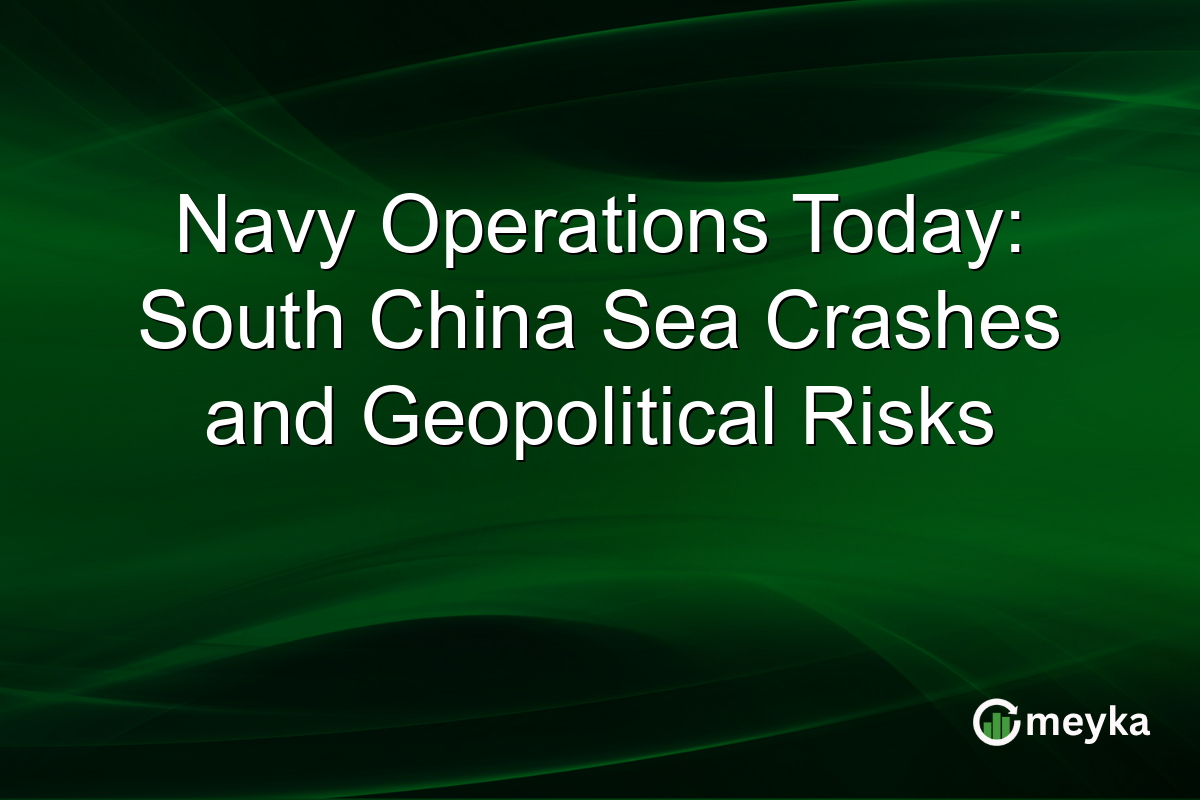Navy Operations Today: South China Sea Crashes and Geopolitical Risks
The crash of two US Navy aircraft in the South China Sea has sparked intense scrutiny. With ongoing investigations, this incident has crucial geopolitical implications. The South China Sea is already a hotbed of territorial disputes, and these crashes involving American military assets could influence defense strategies in the region. Understanding the broader impact of these incidents is vital for grasping future naval operations.
The Incident: US Navy Aircraft Crash
Recently, two US Navy aircraft crashed while operating in the South China Sea, a critical area for global shipping and strategic military operations. The aircraft involved included a fighter jet from the USS Nimitz. At this time, details regarding the cause remain under investigation, but weather conditions and technical issues are considered potential factors. This incident underscores the risks associated with maintaining a military presence in contentious waters, highlighting the operational challenges Navy forces face.
Geopolitical Context: The South China Sea
The South China Sea is a strategic maritime corridor with overlapping territorial claims from several nations, including China, Vietnam, and the Philippines. The US maintains a significant naval presence to ensure open navigation and support allies. The recent crash incident could escalate tensions, especially amid China’s assertive policies. By introducing additional military assets in response, the US might trigger further geopolitical friction, affecting regional stability. Latest discussions around these tensions are surfacing on platforms like X.
Impact on Naval Operations
This crash could lead to a reevaluation of current naval strategies, focusing on pilot training, aircraft maintenance, and navigational protocols. As investigations proceed, any technical or procedural insights may influence future naval operations not only in the South China Sea but globally. This could mean more rigorous standards and checks to prevent future incidents, ensuring the safety and efficiency of maritime operations.
Future Defense Strategies
Looking ahead, the US may adopt more stringent controls and enhance collaborative exercises with allies in the region. This event may also prompt an increase in investment in naval technology and infrastructure. By ensuring robust operational capabilities, the US aims to deter aggressive actions in one of the world’s most important strategic regions. This illustrates the essential nature of adaptable and resilient defense strategies in the face of new challenges.
Final Thoughts
The crash of US Navy aircraft in the South China Sea serves as a stark reminder of the geopolitical tensions and operational risks in this region. As investigations reveal more about the causes, the Navy and allied forces are likely to draw valuable lessons impacting future strategies. The outcome may involve enhanced training, better technology integration, and stronger alliances, all aimed at maintaining stability and safeguarding interests. For policymakers and military strategists, this situation highlights the need for a balanced approach that combines tactical readiness with diplomatic engagement. Ultimately, how nations respond to such incidents will shape the contours of regional security dynamics.
FAQs
The causes of the crash are still under investigation, but possible factors include adverse weather conditions and technical malfunctions. Official findings will provide more clarity soon.
The crash could prompt a reevaluation of operational protocols, including enhanced pilot training and maintenance routines, to prevent similar incidents in the future.
This incident may escalate regional tensions, particularly between the US and China, influencing defense strategies and alliances in the South China Sea area.
Expect more stringent controls and increased investment in technology and infrastructure, aiming to prevent future crashes and reinforcing regional defense postures.
The South China Sea is a major maritime corridor, crucial for global trade, and a focal point of conflicting territorial claims, making it a significant area for military operations and geopolitical stability.
Disclaimer:
This is for information only, not financial advice. Always do your research.






